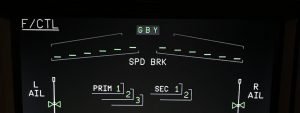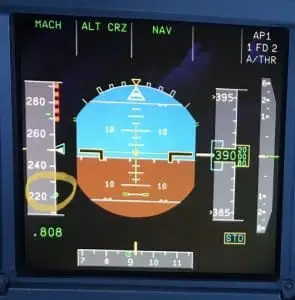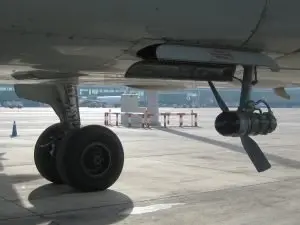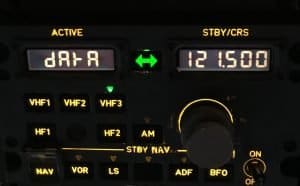I may earn a small commission from links on this page, but I only recommend quality products I trust.
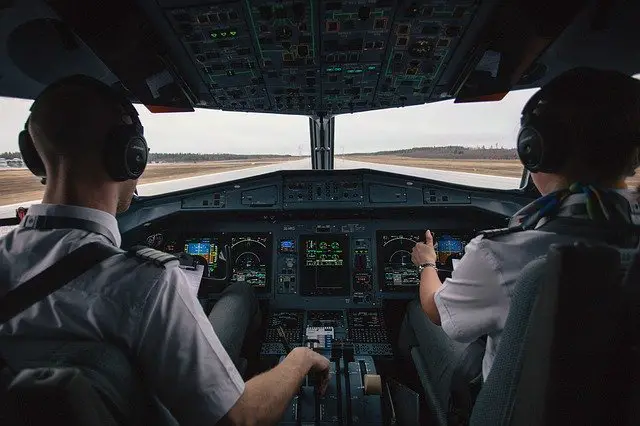
Pete has been flying aircraft for the last 20 years. He has flown everything from light piston aircraft up to heavy jets as both First Officer and Captain. He’s currently enjoying life flying the Airbus A330 for a major international airline.
What is a squawk code?
A “squawk code” is a code assigned by Air Traffic Control that pilots enter into their transponder that identifies the aircraft on the controllers screen. Squawk codes are 4 digit numbers with each digit in the range of 0 to 7, and correspond to a particular flight. When a particular flight is identified by a squawk code, the air traffic controller will be able to see certain details about the flight on their screen, such as: callsign, speed, altitude and assigned altitude. Other information may also be available including aircraft routing, wake category, aircraft type etc.
Some squawk codes are reserved for particular situations, for example 7700.
Learn about how transponders and transponder codes work.
Table of Contents
What does Squawking 7700 mean?
7700 is a squawk code that is reserved for emergency situations and immediately alerts Air Traffic Control (ATC) and other units that the aircraft squawking 7700 is in distress. It may be assigned by Air Traffic Control or the pilots may decide to enter it into their transponder themselves.


The 5 Best Aviation Audiobooks (Chosen by a Pilot) A list of the best aviation audiobooks chosen by a current airline pilot. From fascinating stories at the dawn of aviation to modern day aircraft accidents.
What are other squawk codes that are reserved?
Some ATC squawk codes are resaved for certain situations, such as:
| Squawk Code | Meaning |
| 1000 | Conspicuity code – ADS-B/Mode-S flight number used for identification |
| 1200 | Visual Flight Rules (VFR) – U.S. and Canada |
| 2000 | Used when entering SSR airspace from non-SSR airspace. e.g. used when exiting Oceanic Airspace before a squawk is assigned by ATC |
| 4440-4452 | Operations above FL600 (NASA, SR-71,U-2) |
| 7000 | Visual Flight Rules (VFR) – ICAO |
| 7001 | Sudden military climb-out from low-level operations (U.K.) |
| 7004 | Aerobatic/Display operations |
| 7400 | Unmanned Aircraft System (UAS) Lost Communication Link |
| 7500 | Unlawful interference (i.e. hijack) |
| 7600 | Radio communications failure |
| 7700 | Emergency |
| 7777 | DOD interceptor aircraft on active air-defense missions |
Link: FAA Notice – Squawk 4400 Unmanned Aircraft System – Lost Link
When would pilots squawk 7700?
Setting a squawk of 7700 signifies a MAYDAY situation and alerts Air Traffic Control and other units that may be airborne (SAR, AWACS etc.) that the aircraft has an emergency and may not be able to comply with ATC clearances. For example, a sudden loss of cabin pressurization may result in an emergency descent to a lower level – usually 10,000′, or the MSA (Minimum Safe Altitude) if higher.
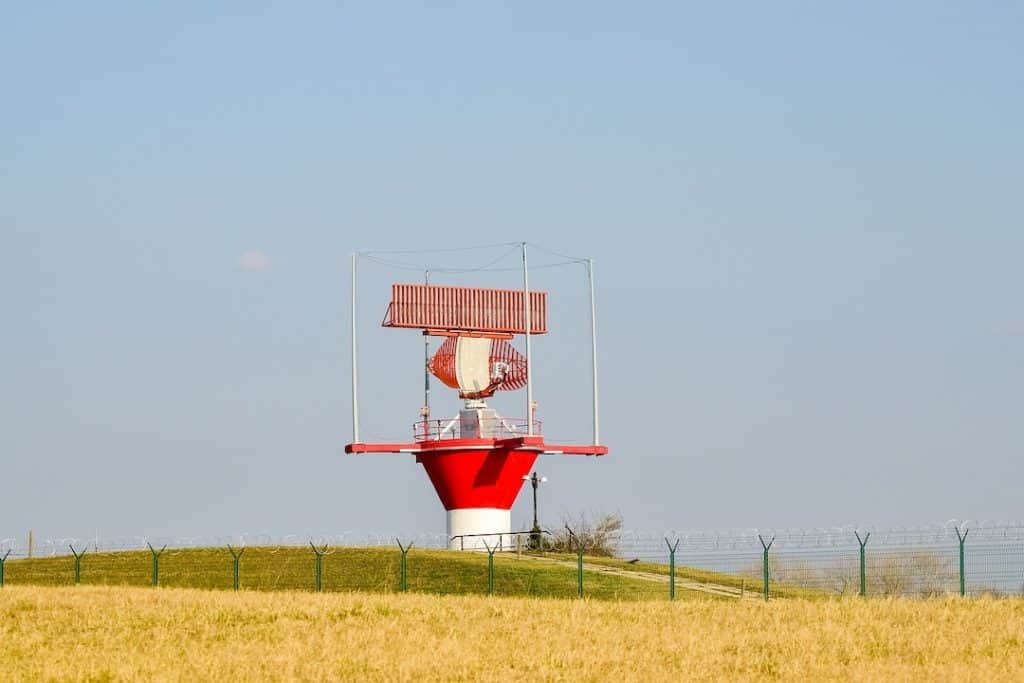
What happens when a pilot squawks 7700?
When a pilot enters 7700 into the transponder and audible alarm will be triggered at the Air Traffic Controllers station. Also the “tag” (showing the aircrafts callsign) will flash with “EM” for emergency. The alert will show up on all sectors that are within range, regardless of the altitude limit sit on the individual scope. This is to alert nearby sectors to the emergency.
Related: Aircraft Transponders Explained
If there is no communication from the aircraft you can expect ATC to attempt to make contact. If the crew declare “MAYDAY MAYDAY MAYDAY” often the first reply from ATC is “Copy your MAYDAY”, or something to that effect. Controllers are aware that then when a pilot declares an emergency their workload will increase substantially.
Pilots are taught to prioritise flying the aircraft above all else.
1. Aviate
2. Navigate
3. Communicate


The 5 Best Aviation Audiobooks (Chosen by a Pilot) A list of the best aviation audiobooks chosen by a current airline pilot. From fascinating stories at the dawn of aviation to modern day aircraft accidents.
Aviate Navigate Communicate
Aviate
Fly the aircraft. Fly-the-aircraft.
There have been too many accidents over the years where perfectly serviceable aircraft crashed because the pilots became distracted by a minor technical problem.
In 1972 a Lockheed Tristar on approach to Miami went around after the nosegear failed to indicate down and locked. The crew got distracted trying to fix the problem (likely just a blown bulb) and the aircraft impacted the Florida Everglades with a loss of 101 lives. Aviation Safety Network: Everglages L-1011 crash.
Fly. The. Aircraft. There have been a lot of advancements in crew training since this and other accidents. Every 6 months crews are subjected to a number of training and checking days in the simulator where they are subjected to a barrage of failures: engine failures, rejected take offs, go-arounds, fires etc.
In this training and in non-normal operations, the importance of “assigning control” of the aircraft to one crew member is critical.
Often one of the pilots will concentrate solely on flying the aircraft while the other pilot exams the aircraft systems using the ECAM/EICAS, refers to the QRH (Quick Reference Handbook), completes memory items and any other tasks to ensure the safety of the aircraft.
Related: A Guide to the Quick Reference Handbook (QRH)
Navigate
Once the aircraft is secure the next step is to consider “navigation”.
The aircraft is flying, where where is it actually going? Are we up in the cruise at 38,000 feet or are we just airborne out of Zurich flying down a valley?
“Navigation” will depend on the phase of flight. Have we just taken off, and we’re still close to the ground? Have we lost an engine and need to complete an emergency turn?
Maybe we were in the cruise but a loss of pressurization has resulted in us in an emergency descent. Are we surrounded by mountainous terrain and need to consider an escape route?
Terrain, weather, traffic, system failures, remaining fuel – these are just some of the considerations when it comes to navigating the aircraft.
Communicate
The aircraft is secure. The flight path is safe. Only now do pilots consider the “communication” phase.
There will be a number of people we need to communicate with. Air Traffic Control will feature highly on that list though they may not be the first people we need to speak to. Although we may have had to deviate from our clearance and we need to tell ATC soon, there may be higher priorities.
Many technical issues on aircraft happen slowly. There are some that, by their nature, have to be actioned quickly though. In the case of our emergency descent example, there will be memory items the pilots will need to do to protect the aircraft and everyone on board. (More on memory items here).
In this situation, while we need to tell ATC about our emergency, the first communication will likely be a PA to the cabin “Attention, Attention, Emergency Descent“. This brief call is enough to alert the crew to the situation and for them to complete their immediate actions – they will buckle up in the closest available seat and the crew member within reach of the interphone will being telling (yelling?) instructions to the passengers – belt up, hold on and get your oxygen masks on!
When appropriate, the communication to ATC may involve declaring a MAYDAY or a PAN-PAN. Depending on when the emergency arises the initial call to ATC might be very brief: “MAYDAY MAYDAY MAYDAY BigJet123 engine failure, continuing straight ahead” or “stopping on the runway” as appropriate. The best response from ATC to this initial call is acknowledgement of your emergency. They know you’ll be busy and they’ll be waiting for more information.
The controller is likely to be busy too – advising nearby sectors or airports of the emergency and clearing other aircraft out of your way.
At an appropriate time, you’ll need to update ATC and also the flight attendants/cabin crew and the passengers on the developing situation. Its important this communication is concise and clearly passes all the relevant information, with no room for misunderstanding.
Often the acronym NITS is used to convey information in aviation.
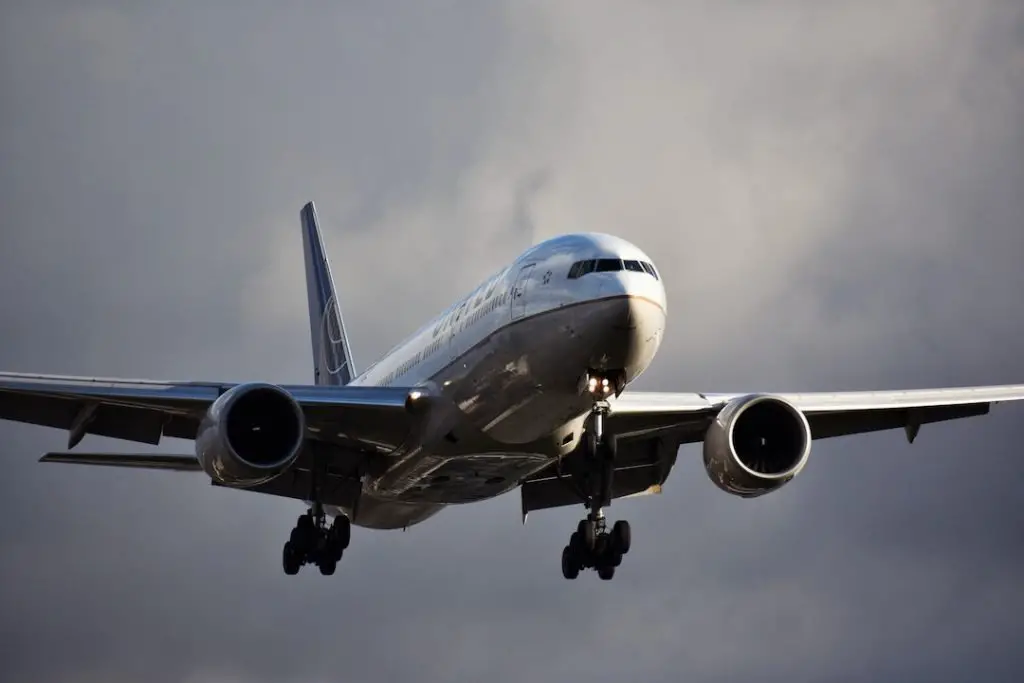
How is NITS used in aviation?
In abnormal or emergency situations communicating clearly is key. As a crew you need to convey what your issue is, what that means and what you need of the other party. NITS (Nature – Intention – Time – Special Instructions) is often used in aviation.
N – Nature
This is the “nature” of the problem. This should be concise – one or two sentences should be enough. How you convey the “nature” will depend on who you’re talking to – for example, in the event of a damaged engine after a birdstrike it would be important to convey the fact the engine was damaged so the runway can be checked for FOD (Foreign Object Damage) in case there is debris on the departure runway.
Perhaps for passengers, “bird strike” might be a sufficient description.
I – Intention
What is you’re intention – to divert to another airport, return to the point of departure, enter a hold to complete checklists etc.
At this point it’s important to tell the cabin if this will be a normal landing, or an emergency landing. They will follow different procedures depending on the type of landing expected.
A straight-forward engine flameout might be considered a “normal landing” where you expect to be able to stop on the runway.
But with a serious hydraulic issue or loss of control, it might be more appropriate to prepare for an “emergency landing” (with passengers and crew briefed appropriately and assuming the “brace position” before landing).
T – Time
If you’re returning to the point of departure or diverting to another airport, the crew will need to know how long they have to prepare the cabin for landing.
S – Special Instructions
This is the part where you tell everyone what you need. You’ve declared an emergency and you’re the most important aircraft in the sky. The declaration of a MAYDAY gives the commander the ability to break any rules they see fit to ensure they get the aircraft on the ground safely.
Do you need the crew to perform a visual inspection of the wing? Do you want emergency services on standby for arrival? Or in the event of go-around, do you really want to be attempting a complicated missed approach on one engine? Maybe a go-around straight ahead might be available (bearing in mind terrain and obstacles).


The 5 Best Aviation Audiobooks (Chosen by a Pilot) A list of the best aviation audiobooks chosen by a current airline pilot. From fascinating stories at the dawn of aviation to modern day aircraft accidents.
Life on the Line – Squawking 7700
Pilots, in their entire careers, will likely squawk 7700 or declare a Mayday a number of times.
I say declare a mayday or squawk 7700 because in some situations air traffic control (ATC) may prefer you to keep your original squawk. This will depend on the situation at hand and ATC (if you’re in contact with them) will let you know their preference.
In “no time available” emergencies it’s a good idea to squawk 7700. Setting 7700 in the transponder will alert other units and nearby sectors that you have a problem.
For example, following a sudden loss of pressurization will most likely result in an emergency descent – squawking 7700 will alert nearby ATC sectors (including the one below you) that you have an abnormal situation.
I’ve declared a mayday (and a PAN-PAN) a number of times. On the take-off roll, very close to V1 (the speed at which we must continue the take-off – i.e. stopping is not a possibility) we got a warning of low hydraulic pressure. A “GO” call was made – at high speed, and with doubt about the various hydraulic systems that help us stop (brakes, spoilers etc.), it was safer to continue the take-off and deal with the problem in the air.
The warning was real. We advised ATC we had a problem and as we were still diagnosing the problem, and in busy airspace, we declared a PAN-PAN.
This let the controller know we had a problem, we’re likely to be busy for a while and there’s a chance we may not be continuing the flight as planned. They acknowledged the PAN call and requested we squawk 7700 which would let adjacent sectors know the controller was dealing with an emergency.
We were able to “clean up” the aircraft (i.e. retract the gear and flaps), albeit at a slower speed than normal. ATC assigned us a “discreet frequency” (one that was just for us) and gave us the bearing of the nearest runway. This was great information but it showed an information gap – we had been so busy completing checklists and flying the aircraft we hadn’t give ATC an update – all they knew was we had a “hydraulic problem” – they didn’t know how serious it was.
We had diagnosed the issue, worked out exactly what had caused the indications we were seeing and we had dealt with the initial ramifications. We were in a great situation – we had the initial issues sorted, we were flying with no issue and we had just taken off so we had plenty of fuel. We had plenty of time.
A great decision making tool is the pneumonic DODAR – Diagnose Options Decide/Do Assign Review/Risk
Diagnose – we had gotten the “low hydraulic level” just before V1. We were able to clean the aircraft up but the flaps/gear moved slower than normal. The quantity in one of the systems showed low level.
And a quick check of the other systems showed no issue or damage to any other system. Our diagnosis was a straight forward hydraulic leak and loss of one system.
Options – considering the “big picture” initially our options are usually to 1.) continue the flight, 2.) to return to our departure airport, or 3.) to divert. With degraded systems we weren’t happy to continue the flight – so that was discounted.
A return was an option but as the runway was possibly contaminated by hydraulic fluid it might not be available for some time. There were other airports in the area, with long runways, so we decided to divert.
Decide/Do – so based on our diagnosis and a review of our options we’ve decided to divert. Now’s a good time to tell ATC of our plan. Knowing we still have checklists to prepare for landing and we need to brief the cabin crew and passengers, we request to enter a hold. We’re in a safe position with plenty of time.
Assign – the type of failure may dictate who must fly the aircraft (for example in a reduced electrical situation the only screens available in the cockpit will be the captains). Normally in a situation with reduced systems the Captain will land the aircraft.
Often the First Officer will take control of the aircraft in the hold, get the latest airport information and weather (ATIS) and program the “box” for the arrival. The Captain will be busy, first briefing the cabin crew on the current situation, and then updating the passengers.
So we have “assigned” the First Officer to take control and prepare for the arrival, and the Captain will brief the cabin crew and passengers, before taking control to fly the approach.
Review/Risk – so as a review we have lost one hydraulic system, the other hydraulic systems are operating normally and there are no other issues with any other aircraft systems.
What are the risks? Well we’ve lost one hydraulic source – not a big deal, but we’ve really lost redundancy. The loss of one hydraulic system on modern aircraft is not too serious, but the loss of a second can make things complicated. We will mitigate this risk by diverting and landing soon, rather than continuing on.
Other risks? The hydraulic failure means reduced braking and ground spoilers. The runway we have chosen is long and a check of the performance figures shows we should have no issue stopping. However, as a precaution, we request the emergency services on standby for our arrival.
Once we were both satisfied with the plan we completed our checklists and left the hold to begin our approach. We took a long final and configured early. The longer approach and early configuration gave us time to “feel” how the aircraft behaved in this situation – it felt sluggish but easily controllable.
We landed normally, and even with the reduced braking, we were able to comfortably slow the aircraft and vacate the runway, stopping on a taxiway. We spoke to the fire vehicles who had just surrounded us and asked them to carry out a visual inspection of the aircraft.
We did a PA to the passengers to explain that the vehicles outside we not a cause for a alarm and were just routine in this type of event. The fire chief called us on the radio to report everything appeared normal and they would follow us to the gate.
A debrief with the crew, and entry in the tech log and a taxi ride later we were back where we had begun the day.
Related: A Guide to the Aircraft Tech Log

The 5 Best Aviation Audiobooks (Chosen by a Pilot) A list of the best aviation audiobooks chosen by a current airline pilot. From fascinating stories at the dawn of aviation to modern day aircraft accidents.
Mayday Example: ThomsonFly Mayday at Manchester
The video below illustrates some of the information above.
The initial call to ATC explains clearly they are declaring a Mayday, and their routing.
The reply from ATC is equally concise and with relevant information.
Aviate: They control the aircraft and deal with the initial failure.
Navigate: They ensure terrain clearance and advise “continuing north-westerly and inbound towards Wallasey” VOR.
Communicate: Once the aircraft has been stabilised, they are navigating away from the terrain, then they communicate at 0:50 their initial intentions.
At 2:00 ATC tells them to “Squawk 7700” which will alert nearby sectors and airports to the ongoing emergency.
The video speaks for itself – its an example of excellent work by both the crew and ATC in a busy and challenging situation. All communication is concise and to the point and everyone involved contributes to a safe outcome.
A job well done!
If you found this article interesting please take 5 seconds to share this on your favorite social media. Thanks so much, I really appreciate it! [email protected]
FAQ Summary – Squawking 7700
How do pilots squawk 7700?
To squawk 7700 pilots enter that code into their transponder which will alert ATC that they are experiencing an emergency.
What does FOD mean?
FOD (Foreign Object Damage) refers to debris that can cause damage to aircraft and aircraft engines.
What is a discreet frequency?
A discreet frequency is when Air Traffic Control assign a specific frequency solely to one aircraft. This is often done in emergencies when a greater amount of radio communication can be expected.
How many squawk codes are there?
As squawk codes are 4 digits long and each digit can range from 0 to 7, there are a total of 4096 squawk codes available for use.
What is an emergency descent?
A pilot may have to carry out an emergency descent due to the sudden loss of cabin pressurization. An emergency descent is a rapid descent to a lower level usually at the maximum rate of descent possible. An emergency descent from cruise altitude to 10,000′ may take approximately 40nm and 4 minutes to complete.
What is an emergency turn?
An emergency turn in aviation is a proscribed turn used in the event of an engine failure on departure where the loss of an engine would not allow the aircraft to complete the SID (Standard Instrument Departure). For example, in areas of high terrain a normal departure will specify the climb gradient required to clear the terrain. If the loss of one engine would mean the aircraft could not clear the terrain, an emergency turn will be proscribed which will bring the aircraft away from the terrain.
What is an escape route in aviation?
In the event of an engine failure in the cruise where the aircraft cannot maintain the cruise level, the aircraft will “drift down” to a lower level. If this lower level, following the loss of an engine, is not sufficient to clear terrain and escape route will be proscribed to navigate the aircraft away from the high terrain.
What are the emergency squawk codes?
7500 – Unlawful interference (hijack)
7600 – Radio communication failure
7700 – General Emergency

Pete has been flying aircraft for the last 20 years. He has flown everything from light piston aircraft up to heavy jets as both First Officer and Captain. He’s currently enjoying life flying the Airbus A330 for a major international airline.

